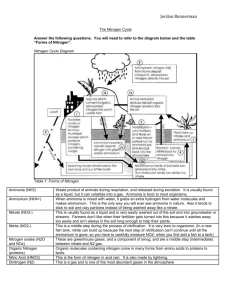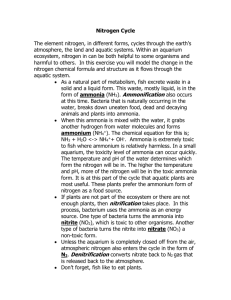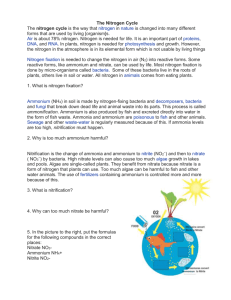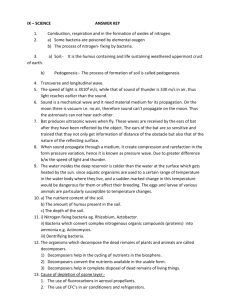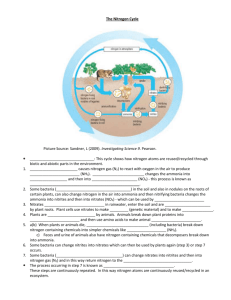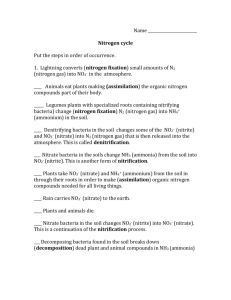The Nitrogen Cycle - Science 9 Daniel Jacobs
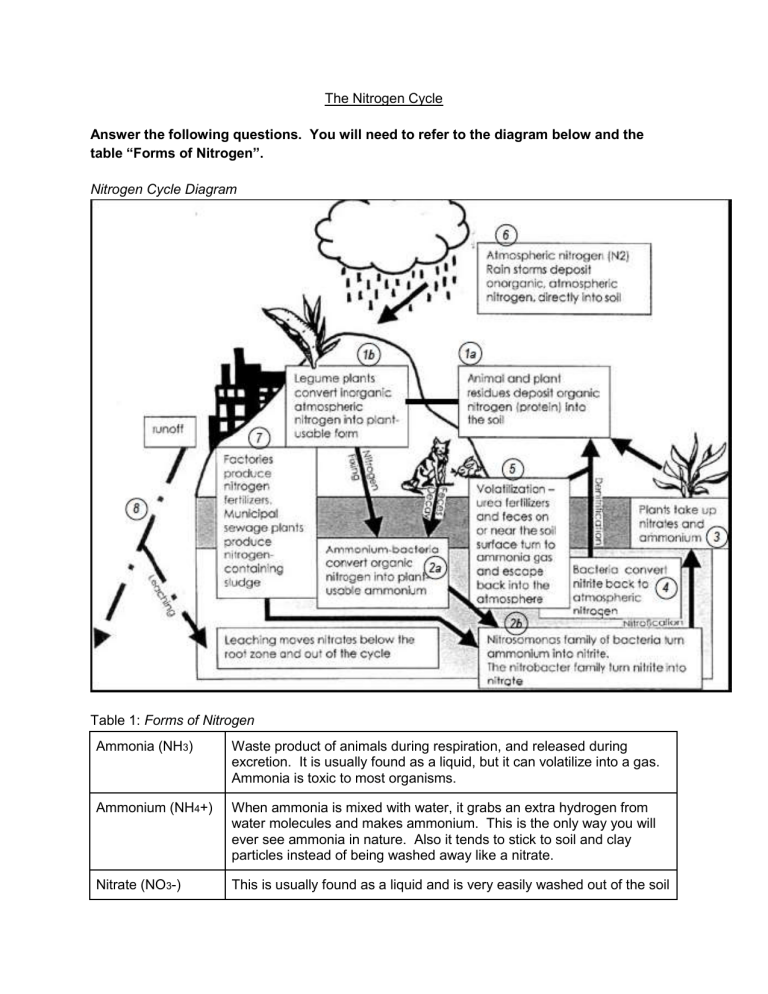
The Nitrogen Cycle
Answer the following questions. You will need to refer to the diagram below and the table “Forms of Nitrogen”.
Nitrogen Cycle Diagram
Table 1: Forms of Nitrogen
Ammonia (NH
3
) Waste product of animals during respiration, and released during excretion. It is usually found as a liquid, but it can volatilize into a gas.
Ammonia is toxic to most organisms.
Ammonium (NH
4
+) When ammonia is mixed with water, it grabs an extra hydrogen from water molecules and makes ammonium. This is the only way you will ever see ammonia in nature. Also it tends to stick to soil and clay particles instead of being washed away like a nitrate.
Nitrate (NO
3
-) This is usually found as a liquid and is very easily washed out of the soil
and into groun dwater or streams. Farmers don’t like when their fertilizer gets turned into this because it washes away too easily and isn’t always in the soil long enough to help their plants.
Nitrite (NO
2
-) This is a middle step during the process of nitrification. It is very toxic to organisms. (In a new fish tank, nitrite can build up because the next step of nitrification can’t continue until all the ammonium is gone, so you have to carefully measure NO2- when you first add a fish to a tank)
These are greenhouse gases, and a component of smog, and are a middle step (intermediate) between nitrate and N2 gas.
Nitrogen oxides
(N
2
O and NOx)
Organic Nitrogen
(proteins)
Organic molecules containing nitrogen come in many forms from amino acids to proteins to lipids.
Nitric Acid (HNO
3
) This is the form of nitrogen in acid rain. It is also made by lightning.
Dinitrogen (N
2
) This is a gas and is one of the most abundant gases in the atmosphere
Note that the descriptions below correspond to the numbers shown in the Nitrogen Cycle
Diagram. Fill in the blanks with the correct terms for each process or bacterial group described.
1. Animals deposit organic nitrogen into the soil. These chemicals are byproducts of their metabolism and respiration. Legume plants convert inorganic atmospheric nitrogen into plant-usable form is a process called nitrogen fixing
2. a) Ammonia bacteria convert organic nitrogen into plant-usable ammonium. b) The nitrosomonas family of bacteria convert ammonium to nitrite. The nitrobacter family of bacteria convert nitrite to nitrate.
3. Plants take up plants Nitrates and Ammonium.
4. What is it called when bacteria convert nitrate back to atmospheric nitrogen? denitrofication
5. Urea fertilizers and feces on or near the soil surface turn to ammonia gas and escape back into the atmosphere. This process is called Volitization.
6. Inorganic atmospheric nitrogen (N2) is deposited directly into the soil during Atmospheric
Nitrogen Rain Storms .
7. What human activity contributes to the accumulation of nitrogen in our soil and water?
Factories and Municipal Sewage plants.
8. Runoff and leaching moves nitrates below the “root zone and out of the cycle.
